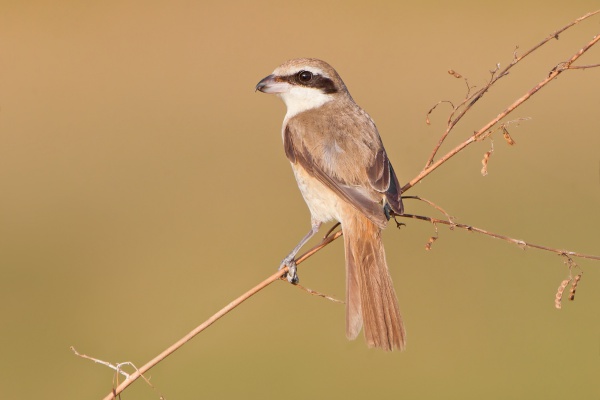Facts About Brown shrike
The brown shrike is a fascinating bird belonging to the shrike family, predominantly found across Asia. It is closely related to the red-backed shrike and the isabelline shrike. Its scientific name, *Lanius cristatus*, has an interesting etymology: "Lanius" derives from the Latin word for "butcher" a nod to the shrike's habit of impaling prey on thorns, earning them the moniker "butcher birds." The term "cristatus" translates to "crested" in Latin.
These birds are easily identifiable by their distinctive black "bandit-mask." They thrive in open scrub habitats, frequently perching on thorny bushes to hunt. There are several subspecies of the brown shrike, which breed in the temperate regions of Asia and migrate to tropical areas. Occasionally, they even appear as far afield as Europe and North America.
The brown shrike has a predominantly brown body, a rounded tail, and the characteristic black mask that can fade during winter. Females typically have finer patterns on their underside and a less pronounced mask compared to males. The subspecies *L. c. lucionensis* features a grey crown that merges into its brown upperparts, while *L. c. superciliosus* boasts a striking white eyebrow line and a richer reddish crown. Birds from central Asia often exhibit overlapping characteristics, making precise classification challenging.
The nominate form breeds in northern Asia and winters in South Asia, Myanmar, and the Malay Peninsula. Japanese shrikes breed in Japan and migrate to various parts of South Asia for winter. The Philippine shrike breeds in Korea and eastern China, spending winters mainly in Taiwan and the Philippines.
These birds are migratory and demonstrate a strong fidelity to their wintering sites, often returning to the same locations annually. They establish winter territories soon after arriving, filling the air with their distinct chattering calls. Early arrivals that secure territories appear to have an advantage. They typically reach India around August and September and depart in April. During winter, they undergo a premigratory molt and sing soft songs reminiscent of the rosy starling's call. They nest in late May or June, laying two to six eggs in nests constructed in various habitats.
Brown shrikes primarily feed on insects, especially caterpillars, but they will also prey on small birds and lizards occasionally. True to their "butcher bird" reputation, they often impale their prey on thorns. Their hunting technique is straightforward: they perch, spot their prey, and swiftly swoop in to capture it.
